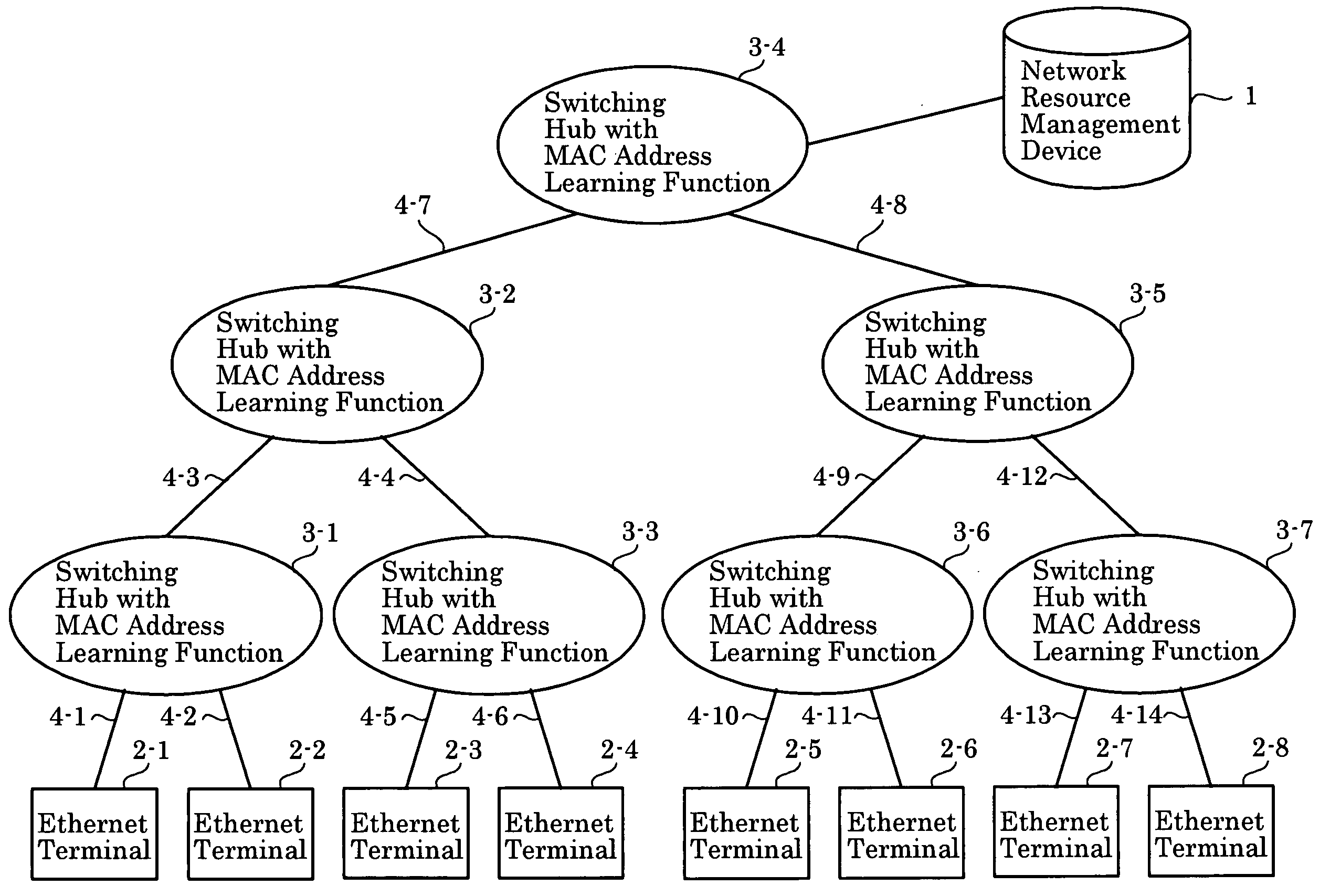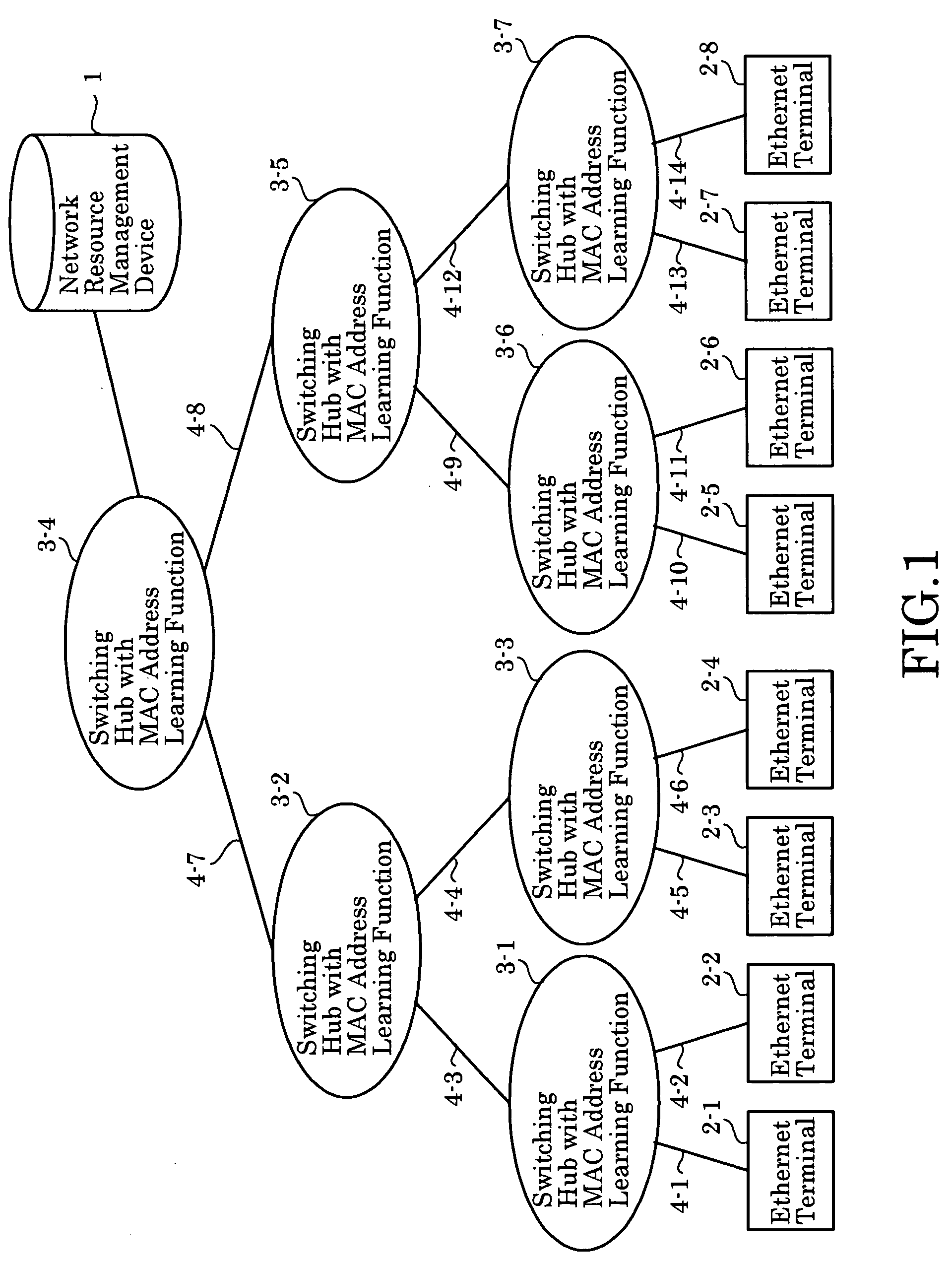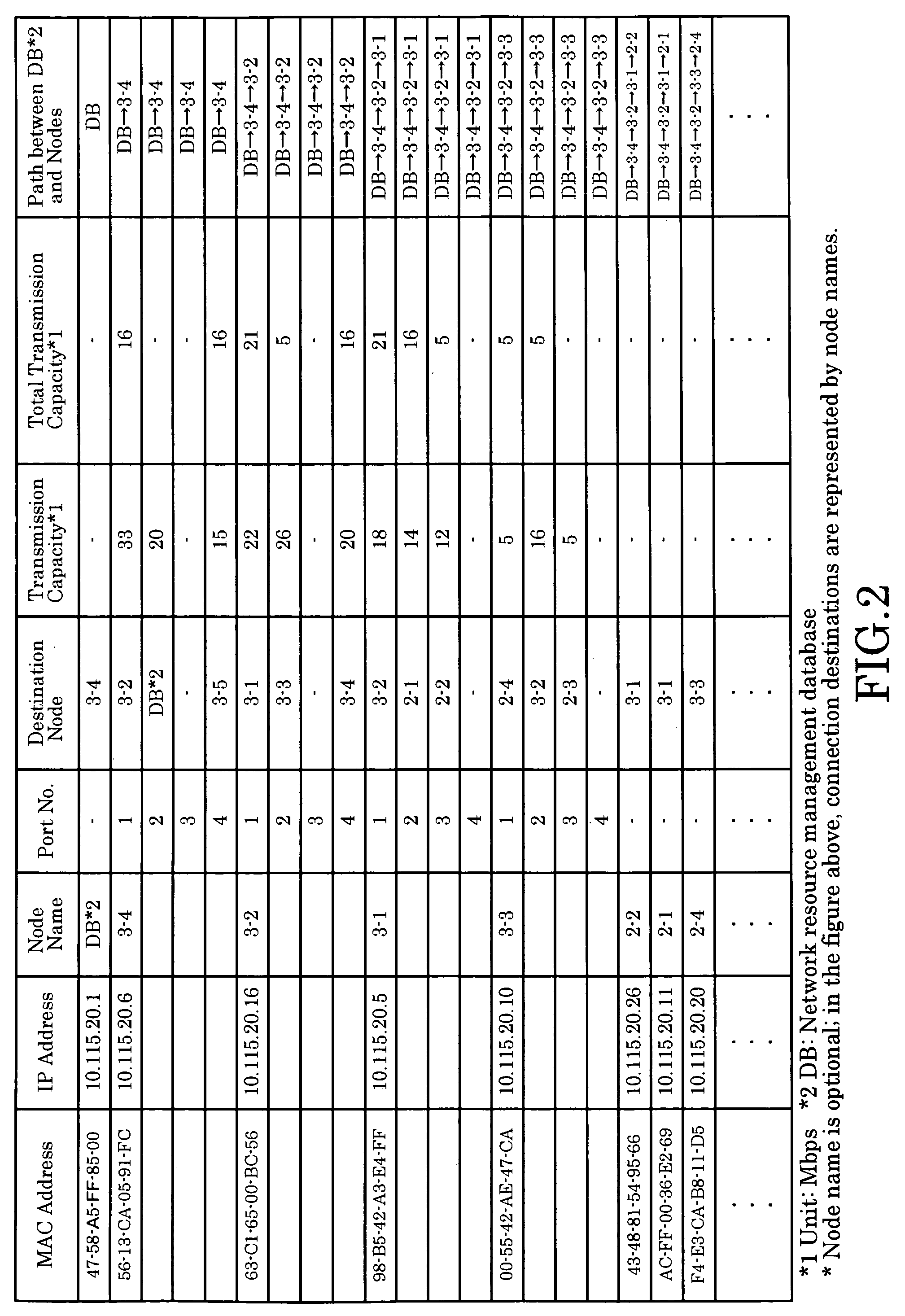Ransmission Capacity Allocation Method, Communications Network, and Network Resource Management Device
- Summary
- Abstract
- Description
- Claims
- Application Information
AI Technical Summary
Benefits of technology
Problems solved by technology
Method used
Image
Examples
embodiment 1
[0106]FIG. 1 is a block diagram illustrating an embodiment of the present invention. This network is composed of network resource management device 1, Ethernet terminals (hereinafter referred to simply as “terminals”) 2-1 to 2-8, switching hubs equipped with MAC address learning function 3-1 to 3-7, and Ethernet transmission links (hereinafter referred to simply as “transmission links”) 4.
[0107]FIG. 2 is a diagram illustrating the configuration of a management database used for capacity allocation to network transmission links (network topology and transmission link capacity allocation). FIG. 3 is a diagram illustrating the configuration of a communication connection management database. The network resource management device has a database for management of capacity allocation to network transmission links, which is illustrated in FIG. 2 and is based on transmission capacity and network topology used for management, and a communication connection management database, which is illus...
embodiment 2
[0125]Operation implementing bidirectional communication using a communication sequence leading to the establishment of communication, which is shown in the first embodiment, is explained by referring to FIG. 2, FIG. 3, and FIG. 9.
[0126]FIG. 9 is a sequence diagram used to explain the communication procedure of the second embodiment. As illustrated in FIG. 9, when terminal 2-1 establishes bidirectional stream data communication with terminal 2-8, the network management device receives a Call Request (CR) packet from call request terminal 2-1 and learns the MAC address of terminal 2-1 (hereinafter referred to as the request source MAC address), the IP address of terminal 2-1 (hereinafter referred to as the request source IP address), the IP address of terminal 2-8 (hereinafter referred to as the request destination IP address), and the reserved transmission capacity that terminal 2-1 intends to use. Based on this information, the network resource management device allocates transmiss...
embodiment 3
[0131]FIG. 2, FIG. 3, and FIG. 10 are used to explain that once the stream data transfer described in the first embodiment is established, the already assured transmission capacity can be modified thereafter.
[0132]Upon establishing the end-to-end communication, the network resource management device receives a Call Request (CR) packet specifying the transmission capacity to be modified and the request destination IP address from the call request terminal that modifies the transmission capacity. Subsequently, the network resource management device records the transmission capacity to be modified in the reserved transmission capacity field of the communication connection management database illustrated in FIG. 3, and assures the transmission capacity recorded under “reserved transmission capacity” by the database for management of capacity allocation to network transmission links illustrated in FIG. 2.
[0133]Subsequently, the network resource management device uses a Call Accept (CA) p...
PUM
 Login to View More
Login to View More Abstract
Description
Claims
Application Information
 Login to View More
Login to View More - R&D
- Intellectual Property
- Life Sciences
- Materials
- Tech Scout
- Unparalleled Data Quality
- Higher Quality Content
- 60% Fewer Hallucinations
Browse by: Latest US Patents, China's latest patents, Technical Efficacy Thesaurus, Application Domain, Technology Topic, Popular Technical Reports.
© 2025 PatSnap. All rights reserved.Legal|Privacy policy|Modern Slavery Act Transparency Statement|Sitemap|About US| Contact US: help@patsnap.com



